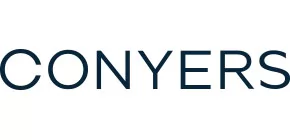- in Middle East
- in Middle East
- with readers working within the Property industries
- within Litigation and Mediation & Arbitration topic(s)
The aviation industry has been severely impacted by the COVID-19 pandemic. Although flying has now resumed in a limited capacity, airlines which have already been severely weakened by months of enforced inactivity are now facing a long, slow recovery, and for many the worst is not over yet. We have already seen a number of airlines enter into bankruptcy protection, and more are likely to follow over the coming months as passengers and operators adjust to the realities of flying in the post-COVID era. As a result, financiers and lessors are considering their position and looking at ways that they can improve their rights or enforce their security in a default situation. In particular, there has been an increased focus on the security that a financier would typically take over the shares in a Cayman Islands aircraft owning SPV and how, in practice, a financier can enforce their rights under this share security to gain control of an aircraft from a defaulting owner.
Introduction
In aviation finance transactions, it is very common for the financed aircraft to be held in a corporate structure by a Cayman Islands special purpose vehicle ("SPV"), rather than directly by the owner. The SPV will obtain third party financing from a commercial bank or other financier in order to enable it to acquire legal title to the aircraft, which the SPV will then lease on to the airline or intended operator. Although the shares in the SPV may be held directly by the owner or operator of the aircraft (whether an airline or a lessor), more typically the shares in an SPV established for the purposes of a secured aircraft financing transaction will be held in an orphan trust structure.
What is an "orphan trust" structure?
In an "orphan trust" structure, the shares in the SPV are not held directly by the owner, operator or financier, but by a corporate trustee (the "Share Trustee") pursuant to a charitable trust structure on and subject to the terms of a Cayman Islands charitable trust. As the SPV is 'orphaned' and not a direct subsidiary of any of the other transaction parties, the directors will typically be professional independent directors provided by a corporate service provider in the Cayman Islands or elsewhere (depending on where the SPV is intended to be tax resident). From an accounting perspective, the SPV will not typically form part of either the owner/operator or the financier's group as neither of these parties will have a direct ownership interest in the SPV. This means that the aircraft can be held off their respective balance sheets (hence these structures are often referred to as being "off-balance sheet" SPVs).
Why use SPV structures for Aircraft financing?
Financiers like SPV structures as they provide a greater degree of certainty and control over the asset, as well as offering bankruptcy remoteness. In addition to granting direct security over the asset and its associated income streams, which will usually take the form of a mortgage and security agreement, SPV financing transactions commonly feature a charge or mortgage over the shares of the asset owning SPV. In the event of a default this allows the financier to step in and take control of the SPV by enforcing the share security, enabling them to either transfer the SPV as a going concern or sell the asset out of the SPV untainted by any court process. This is generally quicker, simpler and cheaper than having to arrest the aircraft and sell it through a court sanctioned process, which can also involve practical issues (particularly around locating and taking physical possession of the aircraft).
Bankruptcy Remoteness
A key benefit for financiers in using an orphan SPV is that it helps to make the structure "bankruptcy remote". The primary purpose of a bankruptcy remote structure is to minimise any risk that the aircraft owned by the SPV will become subject to bankruptcy proceedings or form part of the bankruptcy estate's property in the event of bankruptcy proceedings in connection with the airline or operator that is leasing the aircraft from the SPV. In order to achieve bankruptcy remoteness, the SPV will need to be structured in a way that ensures it is legally independent from both the originator/operator of the asset and the financier, and mechanisms will need to be put in place to ensure that none of the other transaction parties is able to exercise any direct control over the SPV.
The transaction documents will set out contractual restrictions limiting the ability of the shareholders of the SPV to take any action in relation to the liquidation of the SPV or actions in relation to the shares which may negatively impact a financier such as amending the memorandum and articles of association (for example to vary any rights relating to the shares) or to otherwise dispose of the shares, other than in accordance with the terms of the transaction and financing documents.
Given the orphan nature of these SPV structures, and the independent nature of the directors, the SPV will need to enter into the transaction on a limited recourse basis. This means that any claims which may arise against the SPV (other than as a result of its own actual fraud or willful default) are limited solely to the assets which the SPV has available (being the aircraft and any income streams arising from the leasing of the aircraft).
In addition to the limited recourse provisions, the transaction documents should also contain non-petition language, whereby the transaction parties agree not to petition for a liquidation or winding up of the SPV until following the termination of the financing transaction. This is to ensure that none of the parties contracting with the SPV can take any action to wind-up the SPV during the life of the transaction, thereby collapsing the structure prematurely.
Share Charge
As noted above, financiers will typically take security over the shares of a Cayman Islands SPV as part of their security package in connection with a secured aircraft financing transaction.
At the outset of the transaction, the Share Trustee, in its capacity as the registered holder of the shares in the SPV (the "Charged Shares") on and subject to the terms of the charitable trust, will grant security over the Charged Shares in favour of the financier, or security trustee (where appointed) on behalf of the lenders. Given that the Charged Shares relate to a Cayman Islands company, this security would usually take the form of a Cayman Islands law governed charge over shares (the "Share Charge") entered into by the Share Trustee in favour of the security trustee or financier.
Under the terms of the Share Charge, in addition to granting a security interest over the Charged Shares in favour of the security holder, the Share Trustee will agree to certain covenants, including not to:
- issue any further shares in the SPV;
- transfer any of the shares without the consent of the security holder;
- amend the memorandum and articles of association of the SPV;
- take any action to liquidate or wind up the SPV; or
- take any actions or do anything which may impact the security interest granted to the security holder under the Share Charge.
Shares in a Cayman Islands company are registered rather than certificated. This means the entry of a shareholder's details in the register of members of the company, rather than possession of a share certificate, constitutes de-facto evidence of title to the shares. As a result, as a matter of Cayman Islands law, it is not possible to "perfect" a share charge in the way that term is understood in other jurisdictions. The only way to create a legal mortgage over the shares is for the security holder to be noted as the legal holder of the shares in the register of members of the SPV. Clearly this not something that is commercially acceptable to the SPV and nor is it something that the security holder would want unless an event of default has occurred and the security has been enforced. There are, however, a number of measures that would typically be included in the share charge in order to better protect the security holder's position and make it easier for title to the Charged Shares to be transferred on a default. These may include some or all of the following:
- The provision of a signed but undated share transfer form (with the name of the transferee left blank), together with an authorisation from the Share Trustee that this can be completed and dated upon the occurrence of an event of default. This enables the shares to be transferred to the security holder or their nominee once completed and presented to the directors of the SPV. Provisions would also typically be included in either the memorandum and articles of association or in a separate set of board resolutions of the SPV authorising the transfer of the shares upon presentation of the completed and dated share transfer form without the need for any further approvals.
- Obtaining signed but undated resignation letters from the directors of the SPV, which can be dated and presented following an event of default, enabling the security holder to remove the existing directors and replace them with their own nominees.
- The grant by the Share Trustee of an irrevocable proxy appointing the security holder as the Share Trustee's proxy to vote at any meeting of the shareholders of the SPV, giving the security holder a degree of control over the affairs of the company following an event of default.
- Including an annotation on the SPV's register of members confirming that the Charged Shares are subject to a security interest arising under the Share Charge. The purpose of this is to ensure that any interested parties are notified of the existence of the Share Charge and to minimise any risk that there are any competing interests in the shares from a third party who has acquired the shares for value without notice.
The net effect of a Share Charge is that on enforcement the security holder can exercise its right to step in and take ownership of the Charged Shares, or otherwise transfer them to a nominee, giving them direct or indirect control of the SPV. They can either be transferred to the security holder or an affiliate as an interim step pending the sale of the shares and/or a direct transfer of title to the underlying aircraft, or the shares in the company can be directly transferred to a buyer or transferee as nominee of the security holder directly as part of the enforcement process. Ultimately this will depend on the intention of the security holder and the arrangements it has made with its counterparties.
The Share Charge is potentially a useful tool for a financier in the case of an acceleration and enforcement relating to their loan, as it provides an alternative method for effectively gaining ownership of an aircraft without the need for a repossession and sale process under the aircraft mortgage.
Summary
Conyers' aviation finance and FIG teams have a wealth of experience dealing with secured aircraft finance transactions, and in the establishment and enforcement of share charge arrangements, and would be happy to assist with any queries you may have.
The content of this article is intended to provide a general guide to the subject matter. Specialist advice should be sought about your specific circumstances.



